Recent Articles
Popular Makes
Body Types
2017 Chevrolet Silverado 1500 Road Test and Review
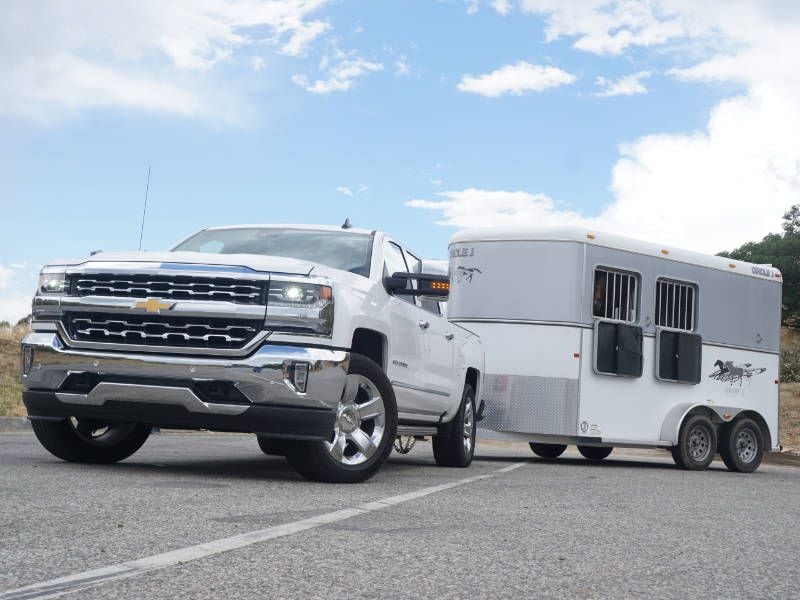
2017 Chevrolet Silverado 1500 Towing Front Aaron Gold ・ Photo by Aaron Gold
As a Chevy truck owner — we have a twenty-four-year-old Silverado we use for hauling horses and hay — I was eager to drive Chevy’s latest and greatest, the 2017 Chevrolet Silverado 1500. After a week-long test drive, I found that the new Chevrolet is a lot like our old Chevy — and that's good in some ways but not so great in others. Where does the 2017 Silverado 1500 pull forward and where does it fall behind? Let’s drive it and find out.
A solid work ethic
“Ask the man who owns one.” That’s what the old Packard ads used to say. Although in this case, “ask the woman” would be more appropriate because our pickup technically belongs to my wife. We use it for horse-related chores, and the old truck is a bit like an old workhorse itself, with a solid, but reliable, work ethic. The seats are torn, the A/C is busted, and the stereo has long since gone silent, but when it comes to hauling and towing, the ol’ girl works as well today as she did when she was new. And that’s something I see in the 2017 Silverado. Er, not the wear and tear. The leather in our nearly-top-of-the-line LTZ model looked like it would last much longer than the cloth-and-vinyl in our old Chevy, the A/C blew like an Arctic wind, and the stereo was loud and clear. But looking at the engineering, it’s clear that the new Silverado is designed for work.
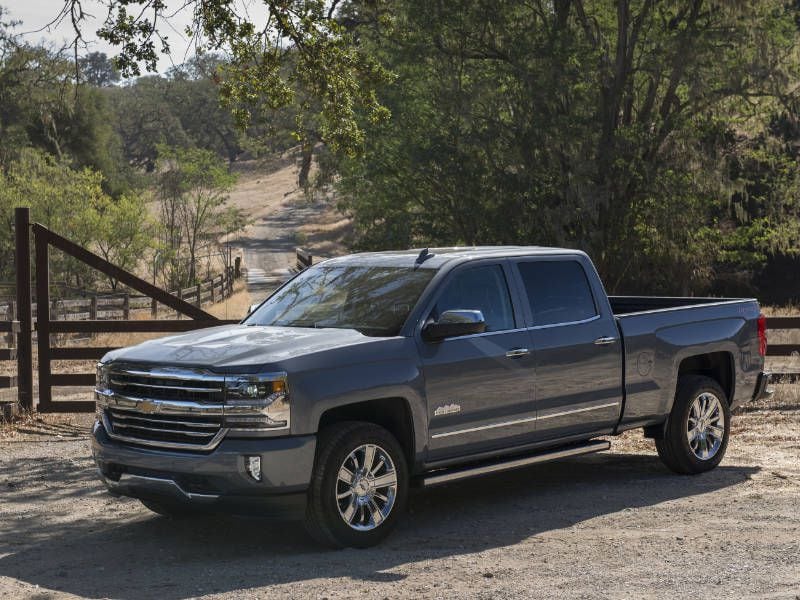
Photo by Chevrolet
Old-tech engine architecture...
Let’s start with the 2017 Silverado’s engines: On paper, they look a lot like the 350 in our old Chevy, with two valves per cylinder and the camshaft in the block, same as Chevy pickup engines since the 1950s. Other manufacturers use engine designs with four valves per cylinder and overhead camshafts, and Ford offers a twin-turbo V6 in place of the traditional V8. Why the old-tech design? Chevrolet says this engine design delivers good low- and mid-range torque, which is what trucks need to shift the heavy loads. It worked in ’93 when my Chevy was built and it works now. (More on our towing adventures in a bit.)
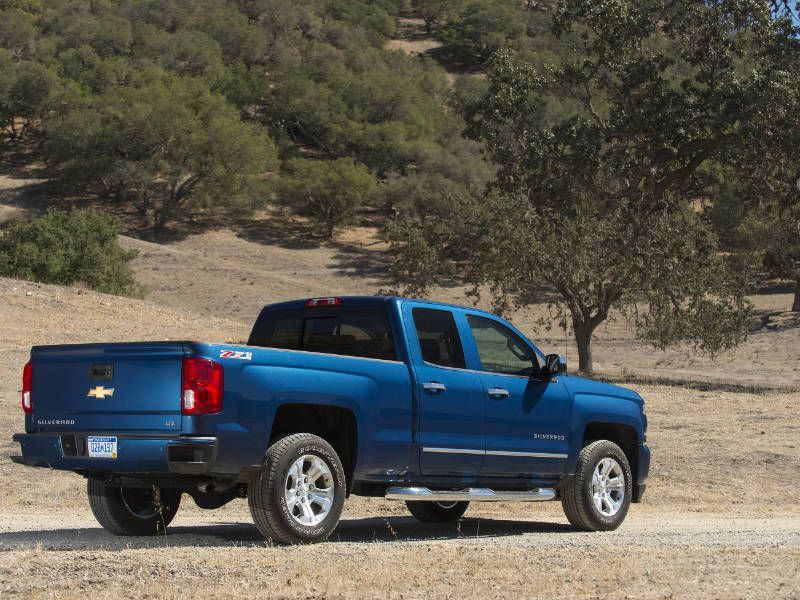
Photo by Chevrolet
...but no shortage of modern technology
While the basic design is a bit old, the hardware is thoroughly modern: All of the available Silverado engines -- 4.3 liter V6, 5.3 liter V8, and 6.2 liter V8 — have direct fuel injection and a cylinder deactivation system that can run the engines on four cylinders when power demands are low. The system is completely seamless; only an icon on the dash (V4 or V8) tells you when it’s operational. The benefit of these technologies is better fuel economy. Silverados are fitted with either a 6-speed or an 8-speed transmission, and EPA fuel economy estimates range from 15 mpg city/20 mpg highway for the big 6.2-liter V8 4x4 up to 18 mpg city/24 mpg highway for the 4.3-liter V6 4x2. Our test truck averaged 17.4 mpg in mixed driving (excluding our towing test; more on that soon), not bad considering the monster engine under the hood.
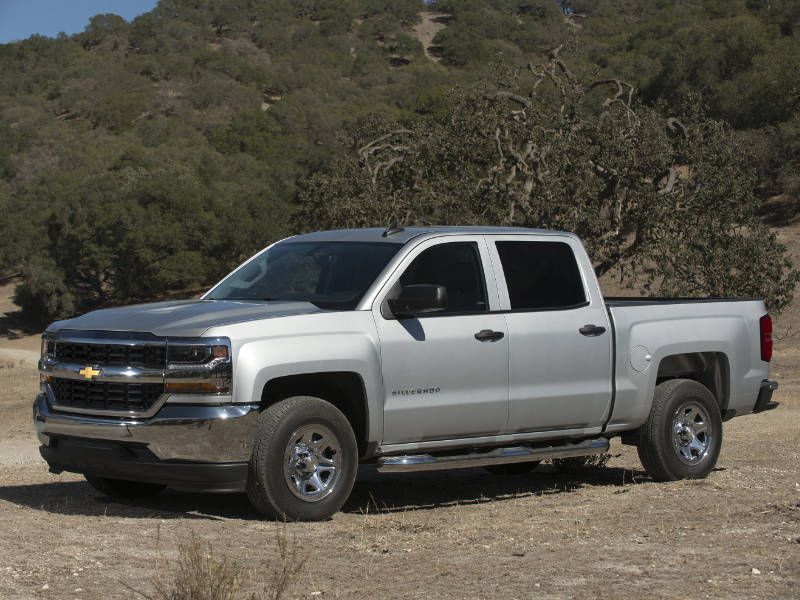
Photo by Chevrolet
The 6.2-liter muscle truck
Our test truck was equipped with the big 6.2-liter V8, a very close relative of the engine in the Corvette. With 420 hp and 460 lb-ft of torque, this is a muscle truck — floor the pedal from a stop and it'll happily spin the rear tires. If being first away from the traffic lights is your thing, no question, this is your truck! But what impressed me most is that if you don't floor the pedal, you'll never know you have a Corvette engine under the hood. The Silverado's throttle action is gentle, and it's easy to feed in the power slowly and gently — a real boon when backing up to a trailer or a loading dock. Our old Chevy doesn't have anywhere near the power of the new one, but it does have a hair-trigger throttle, which makes maneuvering a pain. No question, the 2017 model gets it right.
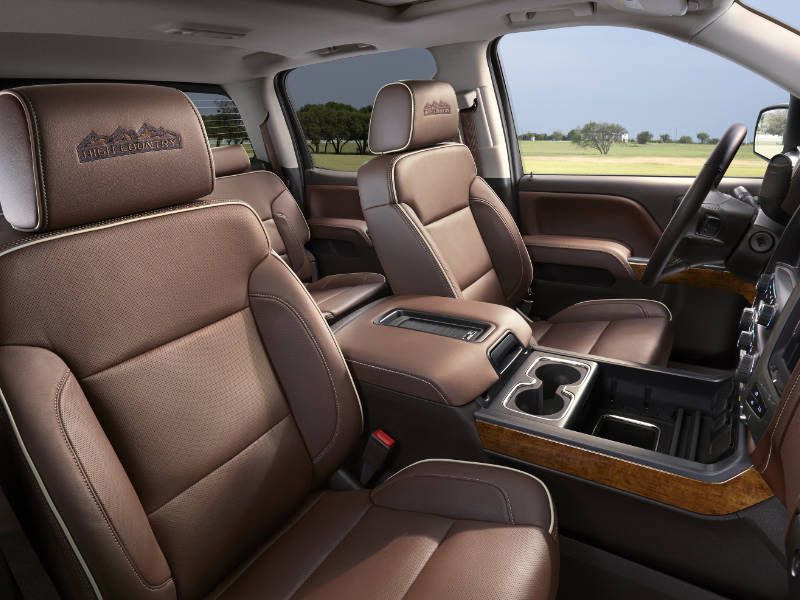
Photo by Chevrolet
Handling like a '76 Malibu
Our old Chevy truck rides like an ox-cart, with springs so stiff one wonders if they compress at all. The new Silverado is the opposite — the ride is pillow-soft. I'm all for comfort — some of today's pickups, especially the heavy-duty models, are nearly as stiff as our old truck — but in my opinion, the Silverado 1500 goes a bit too far. I'd be happy with a slightly firmer ride.
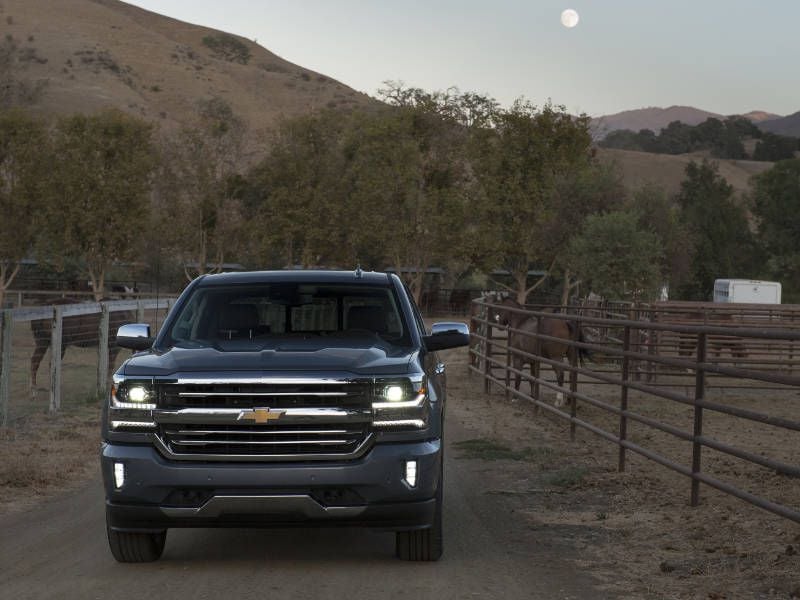
Photo by Chevrolet
New tech, old tech
In many ways, the Silverado 1500 I drove felt like a thoroughly modern truck: It's quiet, well-equipped, and has a roomy four-door crew cab. I'm a big fan of Chevy's MyLink infotainment system, which I think is intuitive and easy to use, and I love having OnStar, a subscription-based service that connects you to a live adviser for help with directions (and calls for help automatically in the event of a crash). But in other ways, the Silverado seems woefully behind the times. It starts with a key, just like our twenty-year-old Chevy; other trucks have moved on to keyless push-button ignition. Nothing wrong with keys, but keyless is very convenient, especially for a work truck — there's no need to fish around in your pocket or purse with dirty hands. The Silverado 1500 lacks advanced safety features like collision warning with automatic braking or adaptive cruise control, features that can now be found in competing pickup trucks.
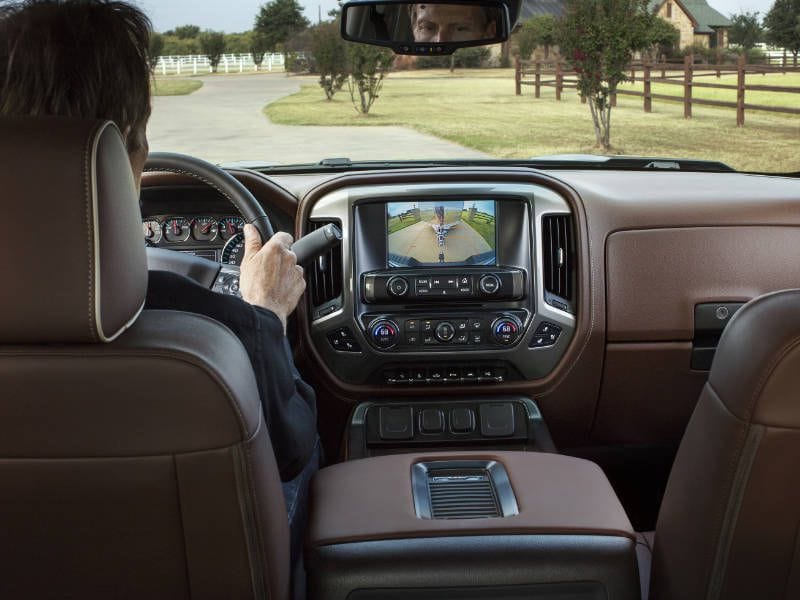
Photo by Chevrolet
Towing with the Silverado 1500
My wife bought our old Chevy primarily to tow our horse trailer, and we put the new Chevy to the same test. The 2017 Silverado 1500 is rated to tow between 7,600 and 12,500 lbs depending on configuration, which is better than many competitors — some competing half-ton trucks have towing capacities that dip well under 5,000 lbs. Our test truck was equipped with the Max Trailering Package, which includes an integrated trailer brake controller, so we had the maximum towing capacity of 12,500 lbs. It also includes two-piece trailering mirrors, which I highly recommend, even if you aren't going to tow a trailer; they offer much better visibility, especially in the area next to the truck. The Silverado's regular side-view mirrors have a diagonal cut at the inner corner that makes it difficult to see traffic in the truck's blind spot.
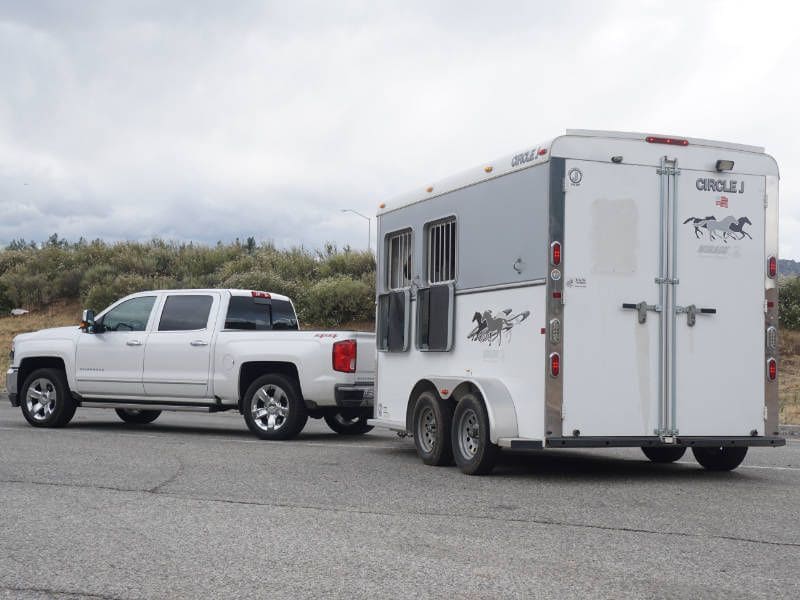
Photo by Aaron Gold
Power to spare
With Aiden the horse on board, our trailer weighs around 4,900 lbs, less than half of our test truck's towing capacity. Our test-towing route takes us over the steep Santa Susana Pass in Simi Valley, California, and with the big 6.2-liter engine under the hood, we didn't expect any problems with power. Our route includes an uphill on-ramp, and with Aiden in the trailer, we can't just stomp the accelerator to the floor; he needs time to shift his weight to keep his balance. But even with gentle application of the accelerator, the Silverado 1500 was able to accelerate to 60 mph smoothly and swiftly without getting anywhere near full throttle, something few trucks can accomplish.
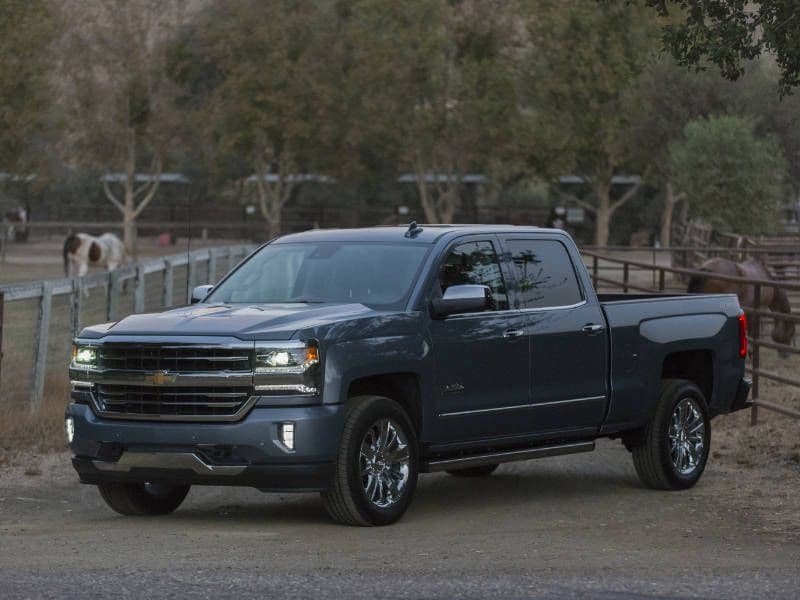
Photo by Chevrolet
...but we'll take firmer rear springs, please
Unfortunately, that super-smooth ride came back to bite the Silverado in the butt: Whenever we'd hit a bump, the tail would bounce around for way too long. Ideally the truck's back end should move up, down, and then settle, but the softly-sprung Silverado would make a couple of oscillations before coming to rest — and that's not a good thing with a trailer on the back end. The previous two half-ton trucks we used to tow the trailer — a Ford F-150 and a Nissan Titan — displayed much better behavior on bumps. Other than that, though, the Silverado felt solid and stable. Fuel economy during our towing loop was 10.4 mpg, a bit thirsty compared to some other half-ton trucks with which we've towed. And once again, technology is lacking: Ford recently introduced a trailer backup assistance feature that allows the driver to steer the trailer with a dial on the dash, with the F-150 twirling its steering wheel as needed. You'll find no such technology in the Chevrolet.
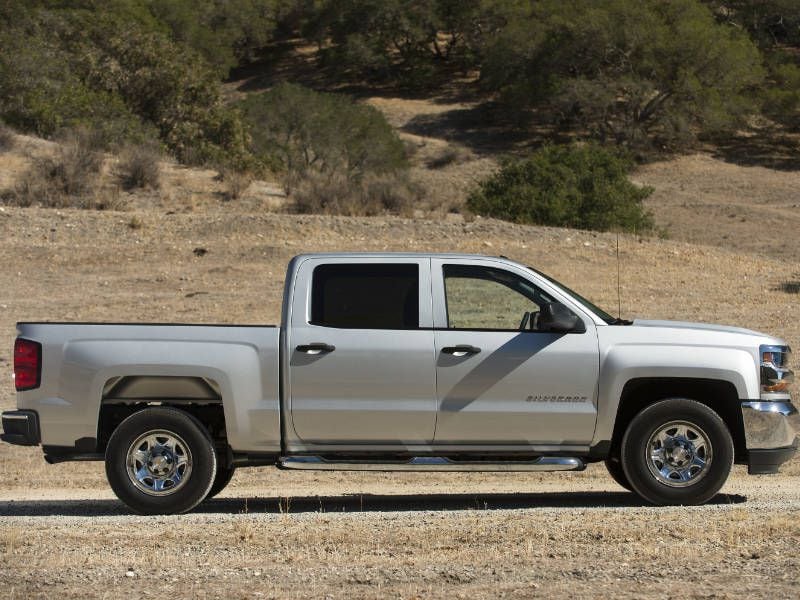
Photo by Chevrolet
A good work truck in need of an update
Overall, I liked the 2017 Chevrolet Silverado: I found it to be a solid work truck that makes a comfortable daily driver. That said, I was surprised at the lack of high-end safety and convenience technology, though I realize that this isn't important to every truck owner; you don't need adaptive cruse control to haul a half-dozen bails of hay. Still, Ford's F-150 blows past the Silverado in terms of technology, plus it has a firmer suspension that offers better stability when towing. Chrysler's RAM 1500 offers an innovative air-sprung suspension and a fuel-efficient diesel, and the Nissan Titan and Toyota Tundra are also good work trucks. Chevrolet needs to modernize the Silverado 1500 — otherwise it's going to get harder and harder to tell the new Chevrolet pickup from my old Chevrolet pickup.
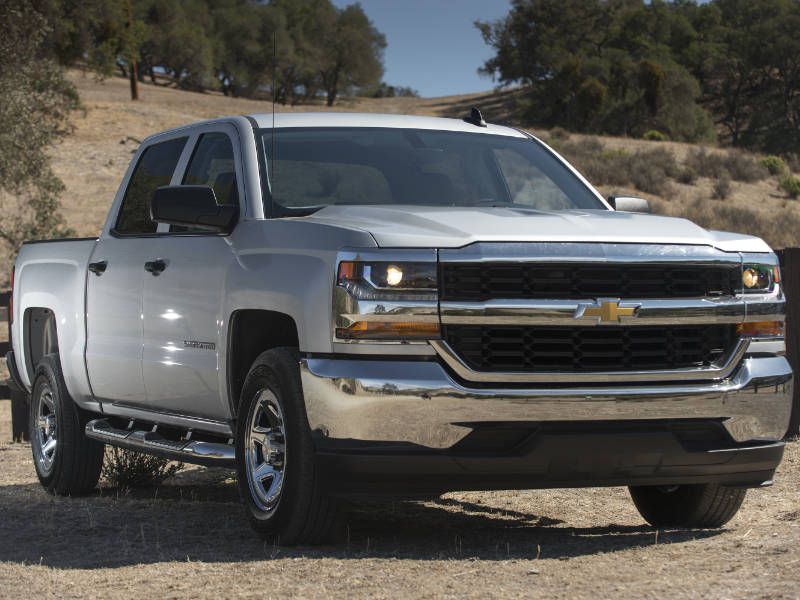
Photo by Chevrolet